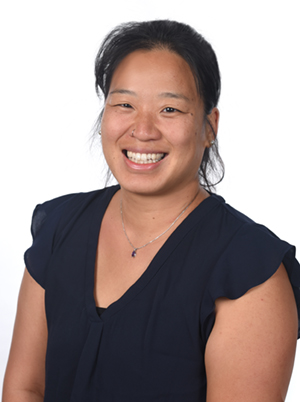18 Jun Telluride Science Town Talk: “Understanding the Chemistry that Powers Our Planet,” 6/25
This coming week the 2024 Telluride Science Town Talks series continues with Dr. Jenny Y. Yang. Her subject is titled “Nature: Understanding the Chemistry that Powers Our Planet.” The event takes place Tuesday, June 25, 6:30 pm; doors, 6 p.m., at the Telluride Conference Center in Mountain Village.
Town Talks are FREE and open to the public.
Note: Telluride Science is committed to expanding its public outreach programming. This summer, the non-profit is hosting the greatest number of Town Talks held to date, a total of nine. All Town Talks take place the Telluride Conference Center.
Visit telluridescience.org to learn more about Telluride Science and the capital campaign to transform the historic Telluride Depot into the Telluride Science & Innovation Center. The venue is soon to be a permanent home for Telluride Science and a global hub of inspired knowledge exchange and development where great minds get to solve great challenges.
The 2024 Telluride Science Town Talks series is being presented by Alpine Bank with additional support from the Telluride Mountain Village Owner’s Association.
Go here for more about Telluride Science.
Go here for more on Town Talks.

“Our planet is powered by the sun. Through photosynthesis, plants use solar energy along with carbon dioxide from the air and water to form chemical bonds to grow and flourish. We use the fruits of their labor to power ourselves through food. Our current energy infrastructure also relies on fuel generated from sunlight over millennia, but the corresponding rapid release of carbon dioxide back into the atmosphere has resulted in increasingly severe climate effects. We can close the anthropogenic carbon cycle and establish a more sustainable energy system by developing artificial photosynthetic processes to generate carbon-neutral fuels,” explained Dr. Jenny Yang.
Yes, we all know our planet is powered by the sun, but did you also know that enough sunlight hits our Blue Marble in just one hour to power civilization for an entire year?
That fact of life on earth begs a question: Why not make a complete switch to solar?
The answer: Solar energy technology today is not as sustainable as we’ve been led to believe it is.
Solar energy production is variable and influenced by factors such as sunlight exposure and weather conditions. For example, a solar panel produces no electricity at night and a reduced amount during extreme weather conditions, both of which interfere with the amount of sunlight reaching a panel. In contrast, at peak sunlight, solar easily produces an excess amount of energy, which can destabilize a grid. However, using the process of curtailment, energy production during peak hours is reduced to meet demand and relieve stress on an existing infrastructure.
While other ingenious remedies have been proposed to mitigate the issue of intermittency, the prevailing solution is energy storage, which allows for the capture of energy to be used at a later time. However, when it comes to taking sunlight and converting it into storable fuel, nobody and nothing does it better than Mother Nature.
In case you missed biology class back in high school, through a process called photosynthesis, plants convert sunlight, carbon dioxide, and water into oxygen, and a convenient source of chemical energy called glucose. Mimicking the very same reaction in a process dubbed “artificial photosynthesis,” Yang can create carbon-neutral solar fuels by splitting water molecules and converting the carbon dioxide residue.
Therefore, by effectively making use of our largest reserve of renewable energy, the sun, we can effectively combat the rise of CO2 emissions, one of the major villains in the ongoing saga we call “climate change.”
Dr. Jenny Y. Yang, more:

Dr. Jenny Yang, courtesy University of California Irvine Department of Chemistry.
Dr. Jenny Yang studied at the University of California Berkeley where she received a Bachelors of Science in Chemistry. She would later pursue graduate studies at the Massachusetts Institute of Technology, gaining a Ph.D in inorganic chemistry.
During her time as an undergrad, Yang interned at the National Renewable Energy Laboratory (NREL), work that would foster her interest in renewable energy.
After graduating MIT, Yang went on to work as a research scientist and postdoctoral associate at the Pacific Northwest National Laboratory (PNNL). Eventually she joined the Joint Center for Artificial Photosynthesis as a Senior Research Scientist at the California Institute of Technology. Her focus: Molecular Electrocatalysts for CO2.
In 2013, Yang would continue her dream of carbon capture as an assistant professor of chemistry at University of California Irvine (UCI), where she remained.
Dr. Yang’s research interests are categorized, per UCI, as “clean energy, hydrogen, carbon dioxide capture, electrochemistry, carbon neutral and negative technology.”
For her research in these fields, Dr. Yang received numerous awards including the Presidential Early Career Award for Scientist and Engineers (PECASE); National Science Foundation CAREER Award; Department of Energy Early Career Award; and the American Chemical Society Inorganic Chemistry Lectureship.
Today, Yang is the Professor of Chemistry in the UCI School of Physical Sciences, leader of the Yang Group, which is “centered on developing efficient and abundant metal catalysts for the production of fuels or feedstock chemicals using renewable energy,” also the DOE’s Center for Closing the Carbon Cycle (4C).
2024 Town Talks, schedule:
• June 25: “Inspired by Nature: Understanding Chemistry that Powers Our Planet”
• July 9: “”Quantum Simulations of the Origins of Life: Life-giving Molecules from Planetary Impacts”
• July 16: “Methane: Supercharging Nature’s Solution to Reverse Climate Change”
• July 23: “Clean Energy’s Reliance on Dirty Magnets: The Source and a Solution”
• July 30: “The Nature of Information”
• August 6: “Chromatin: Your DNA in a Package”
• August 13: “Observing Thunderstorms and Extreme Weather from Space”


Sorry, the comment form is closed at this time.